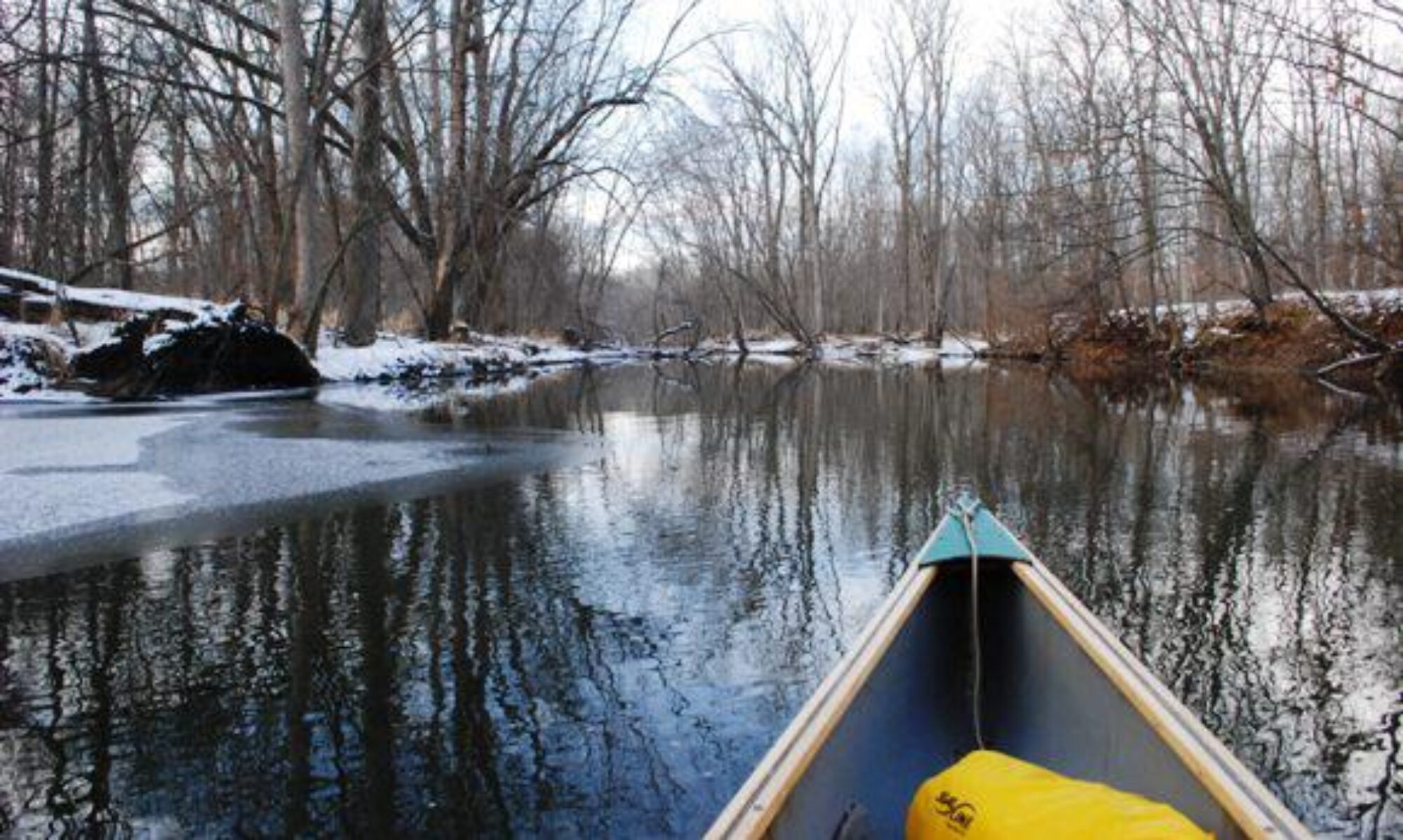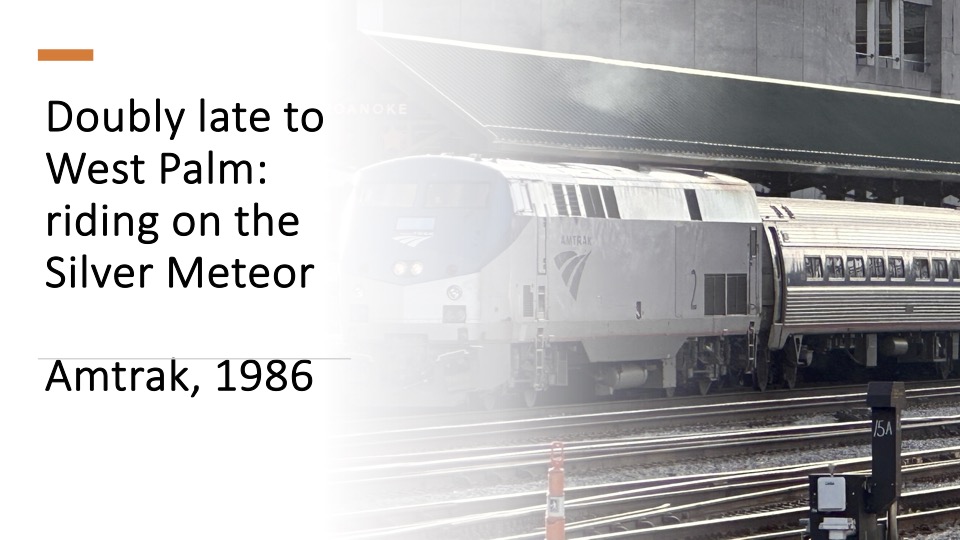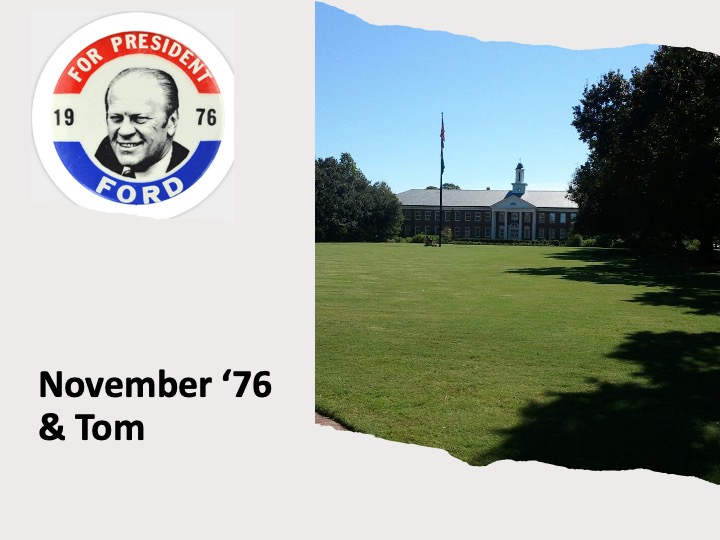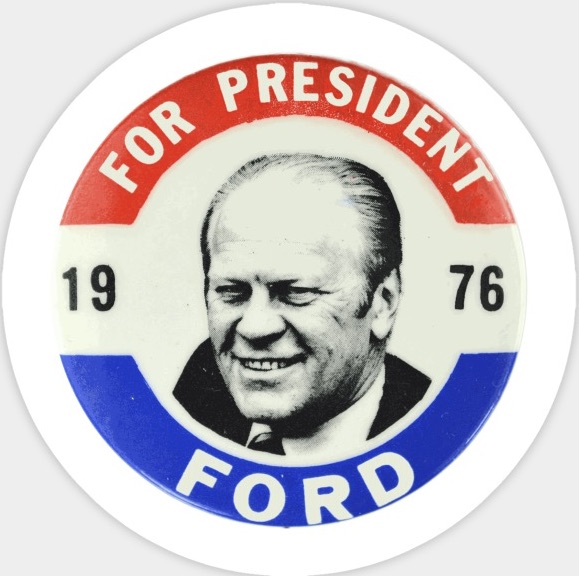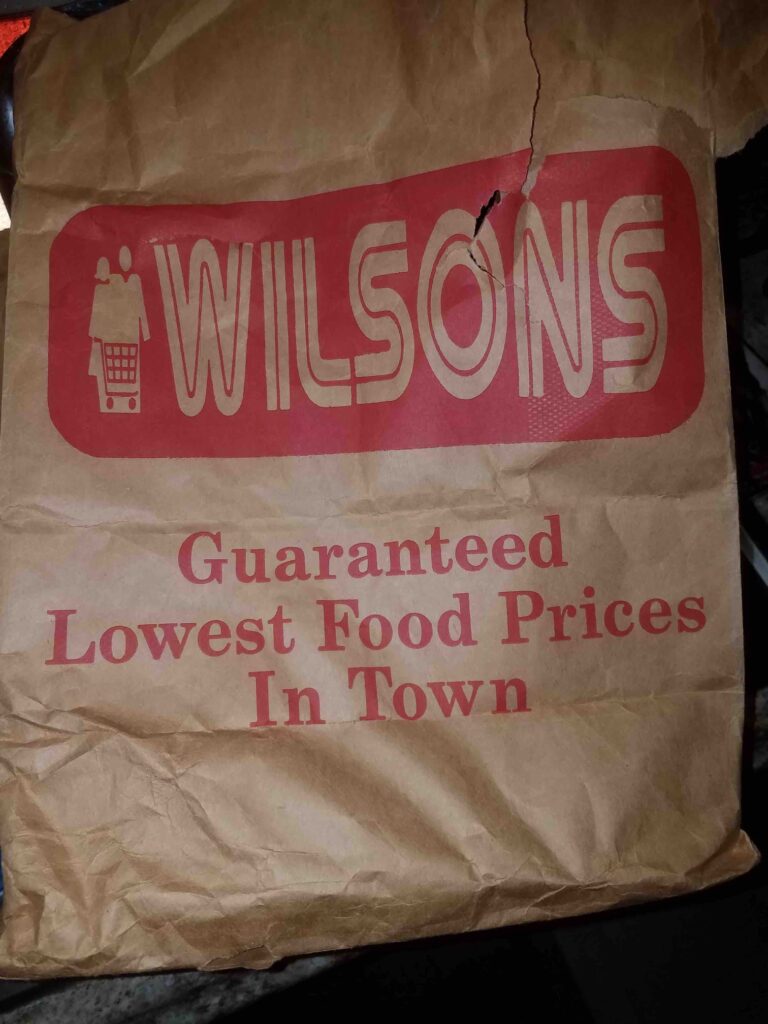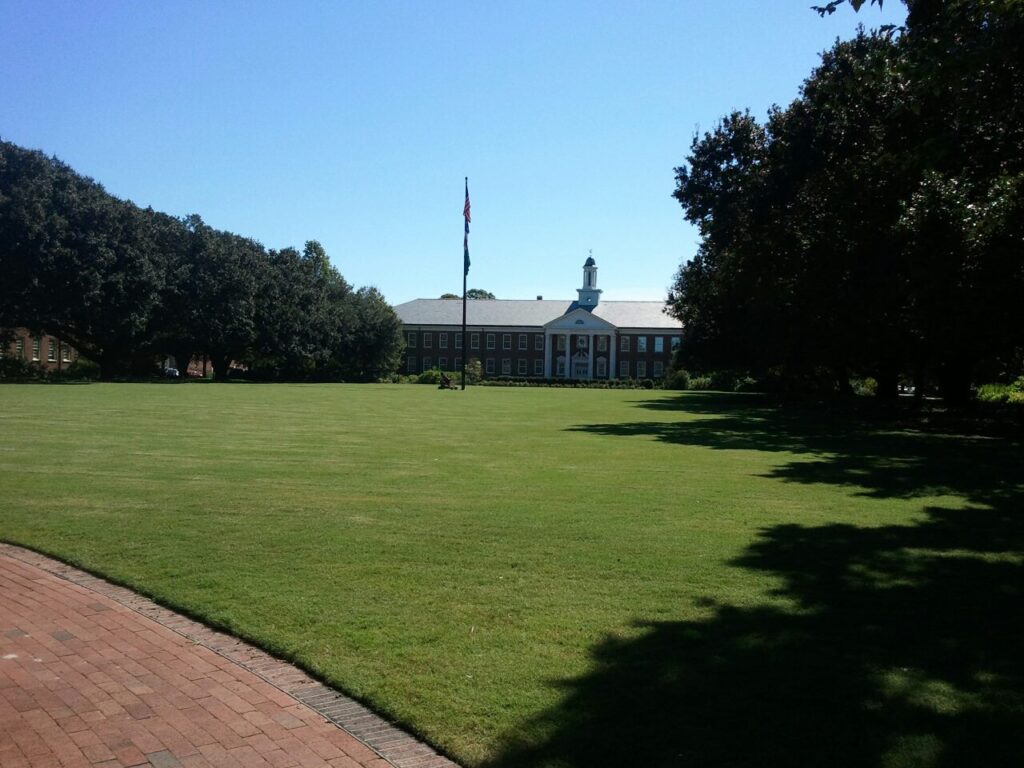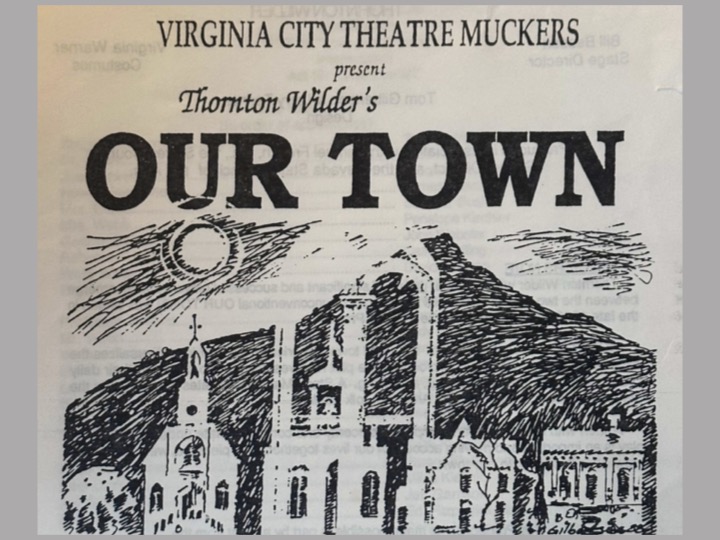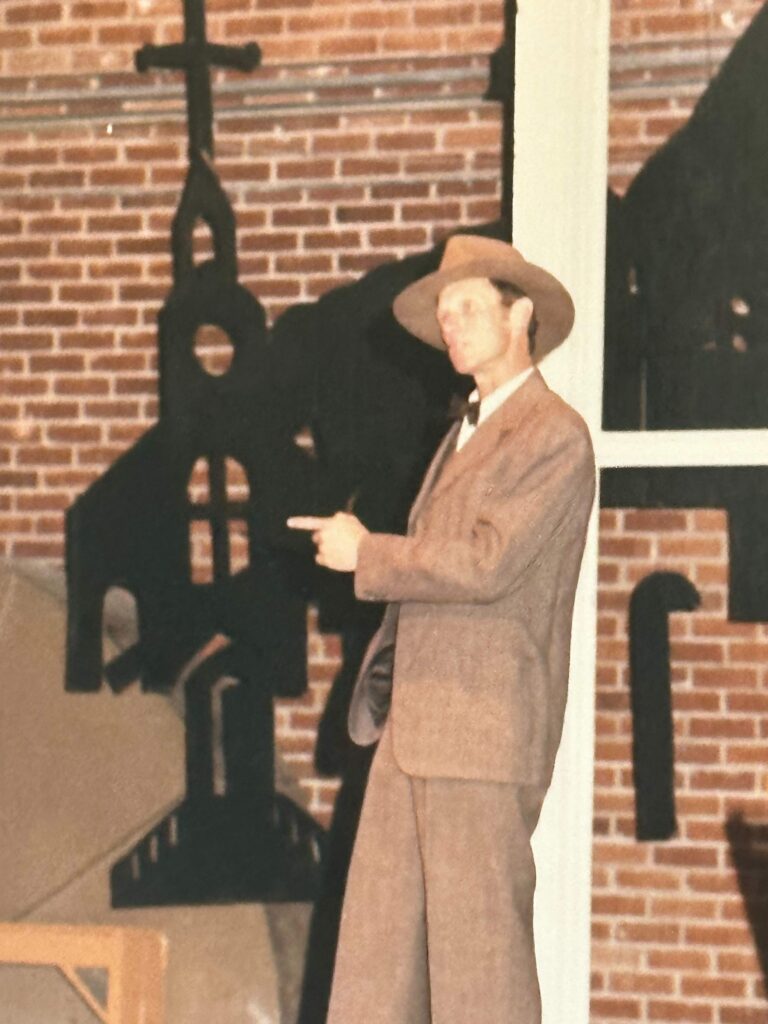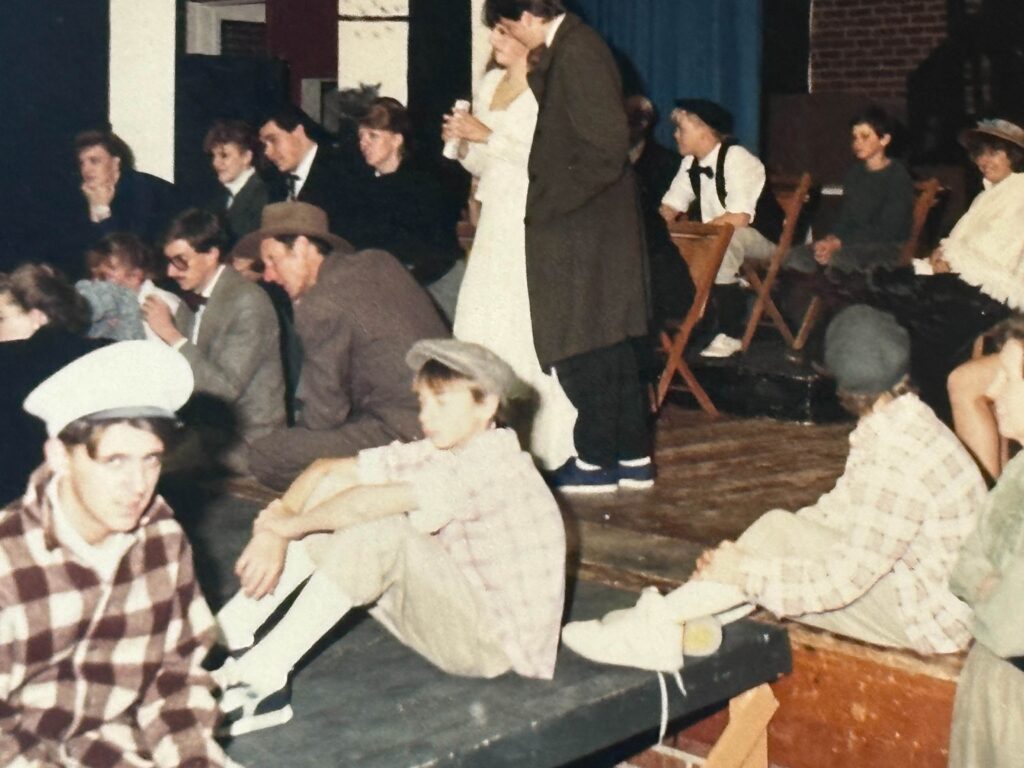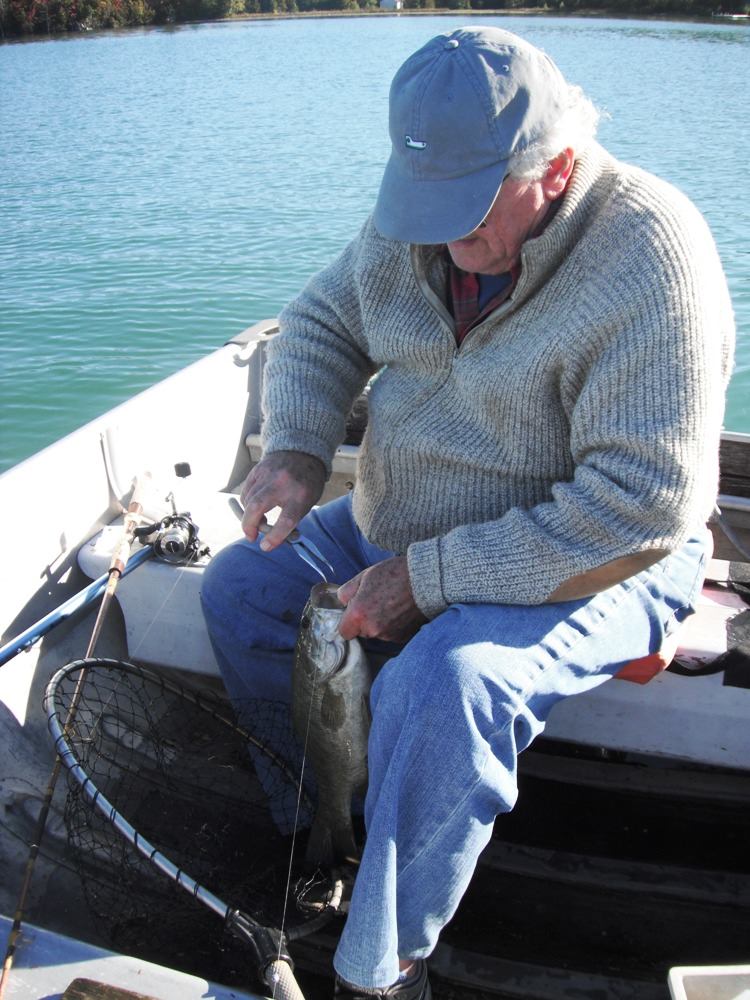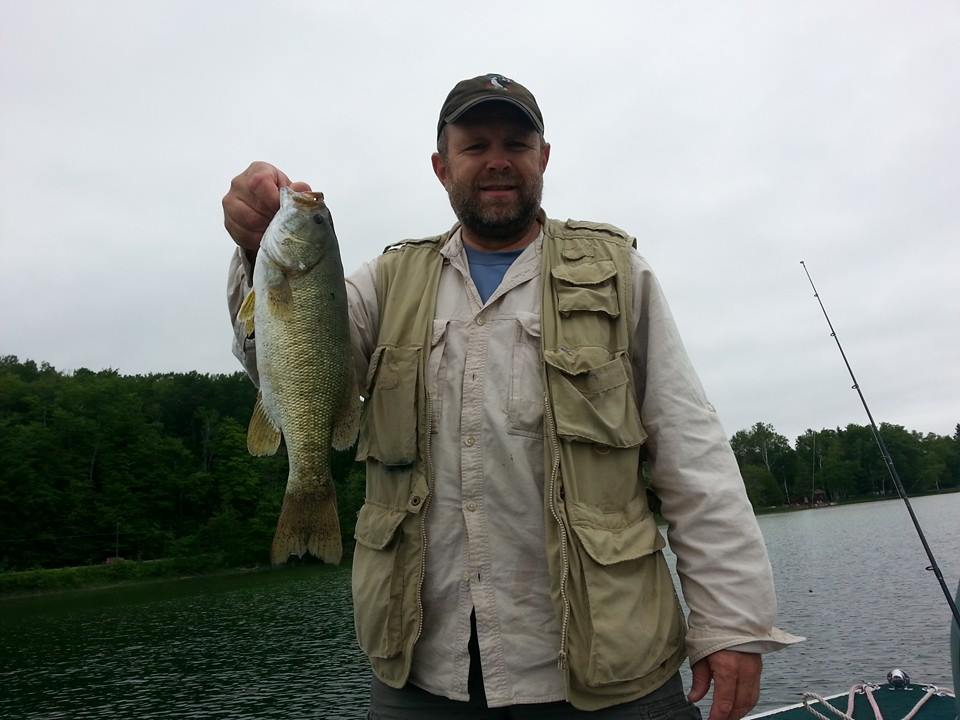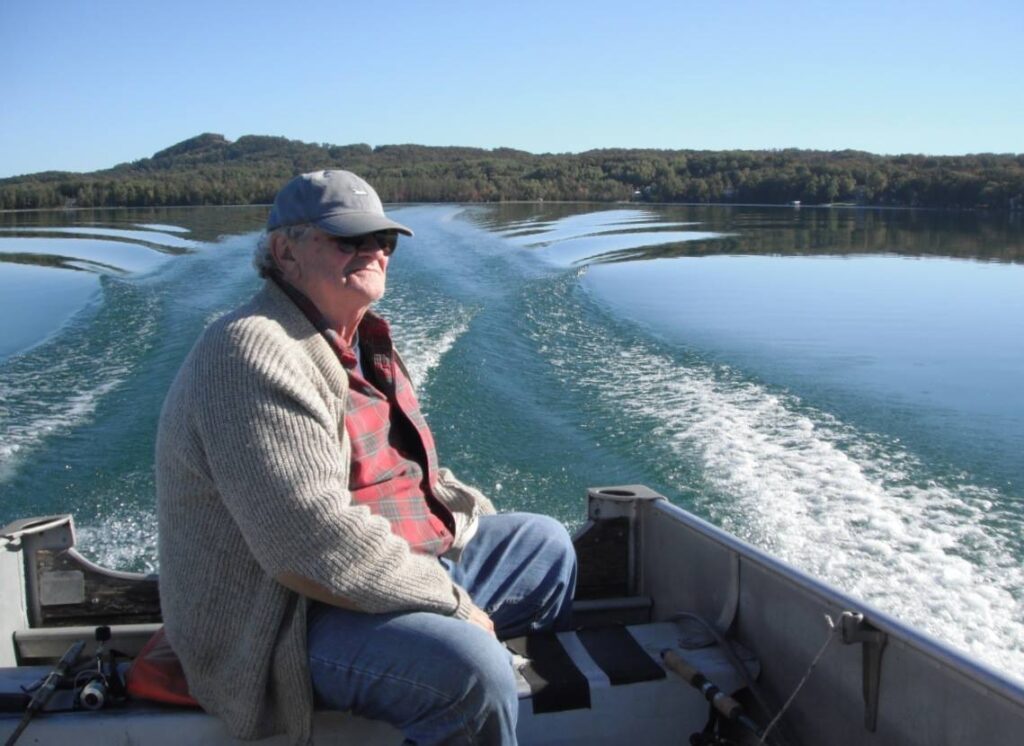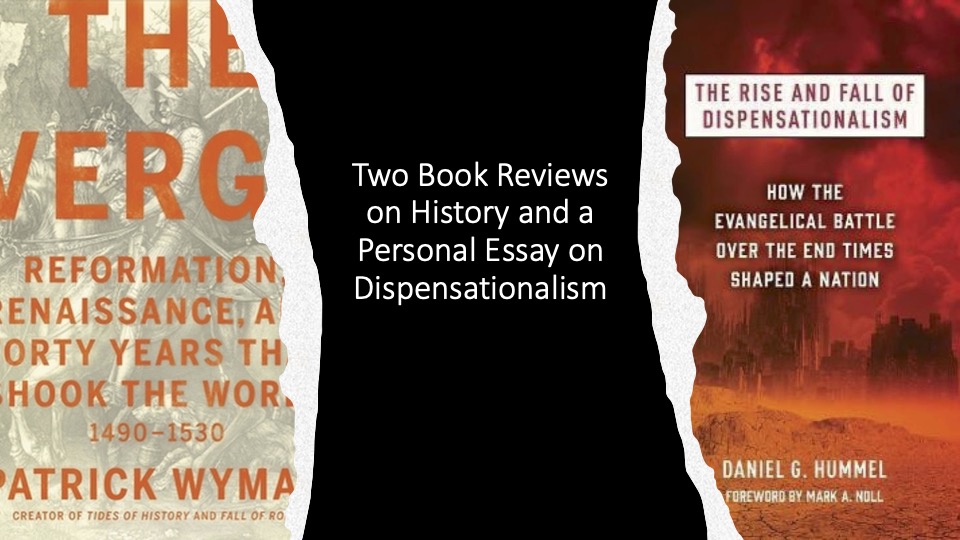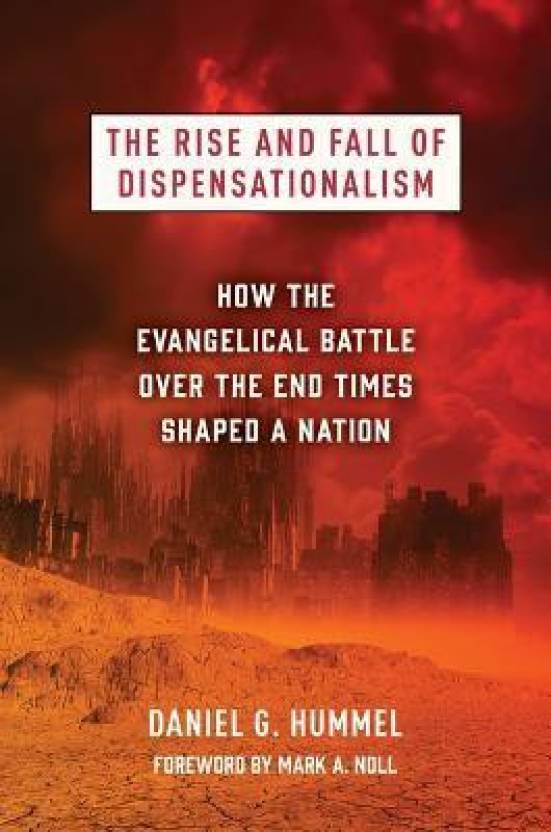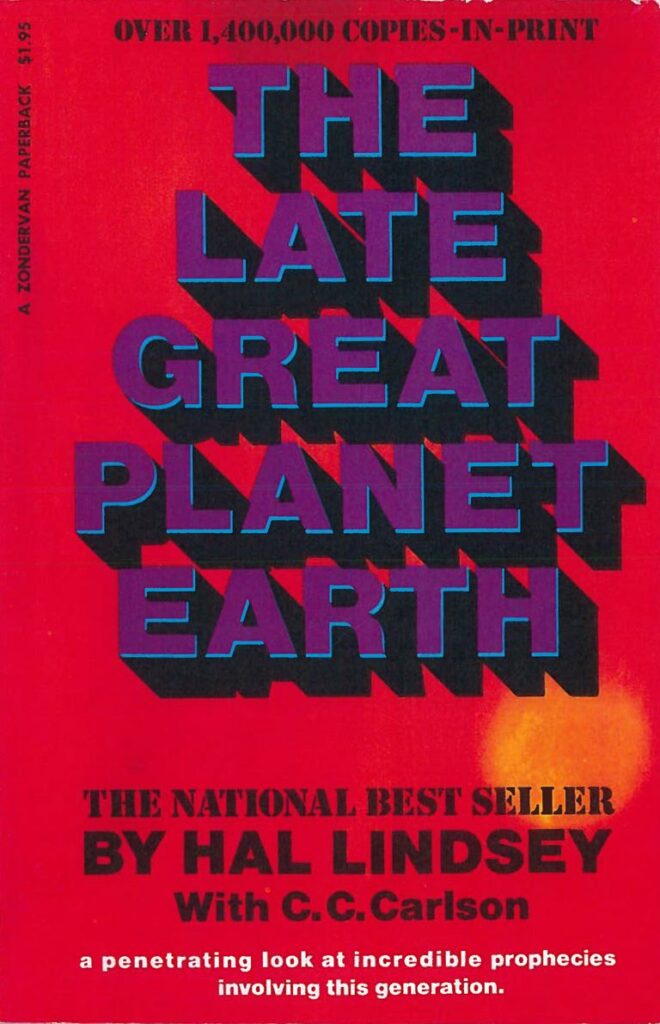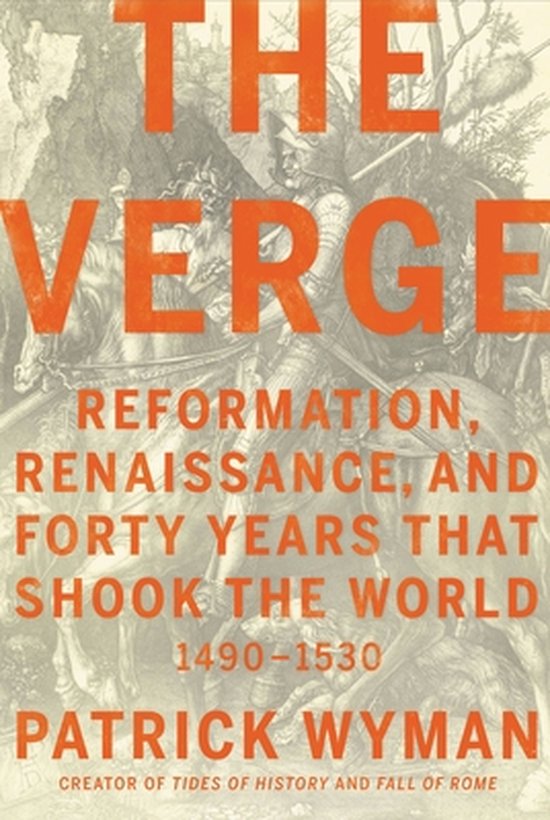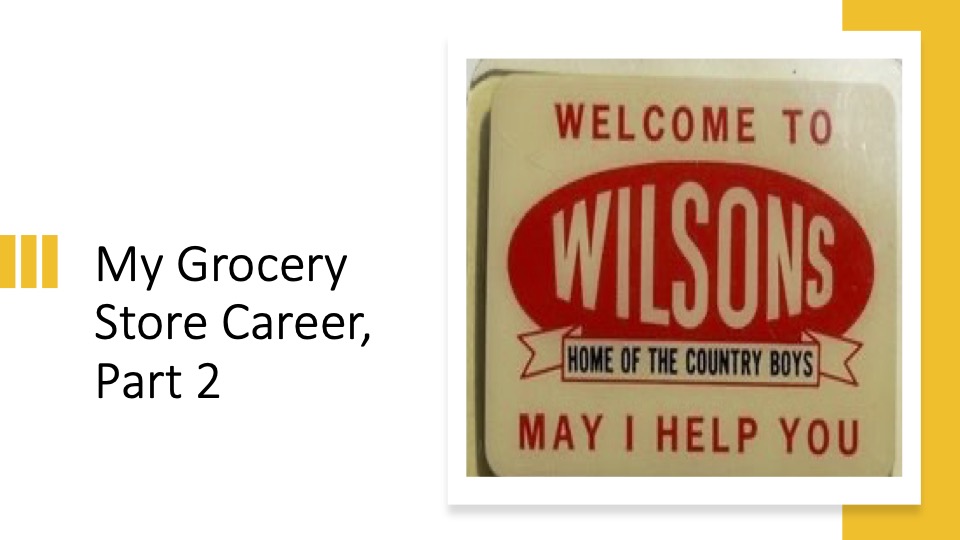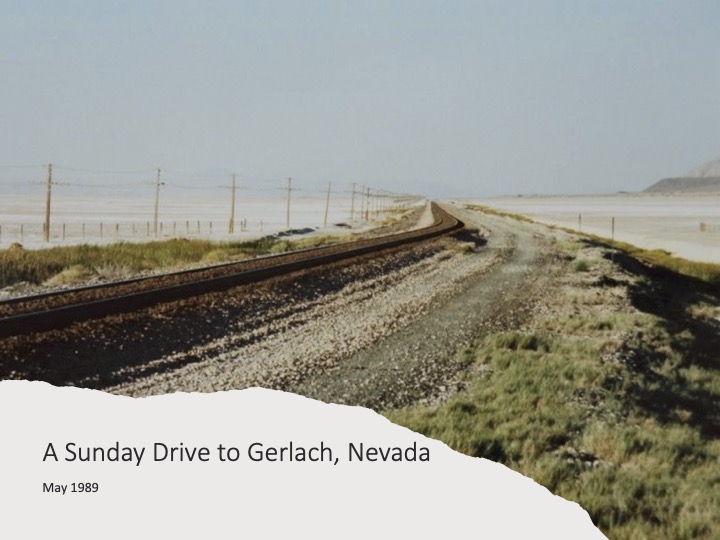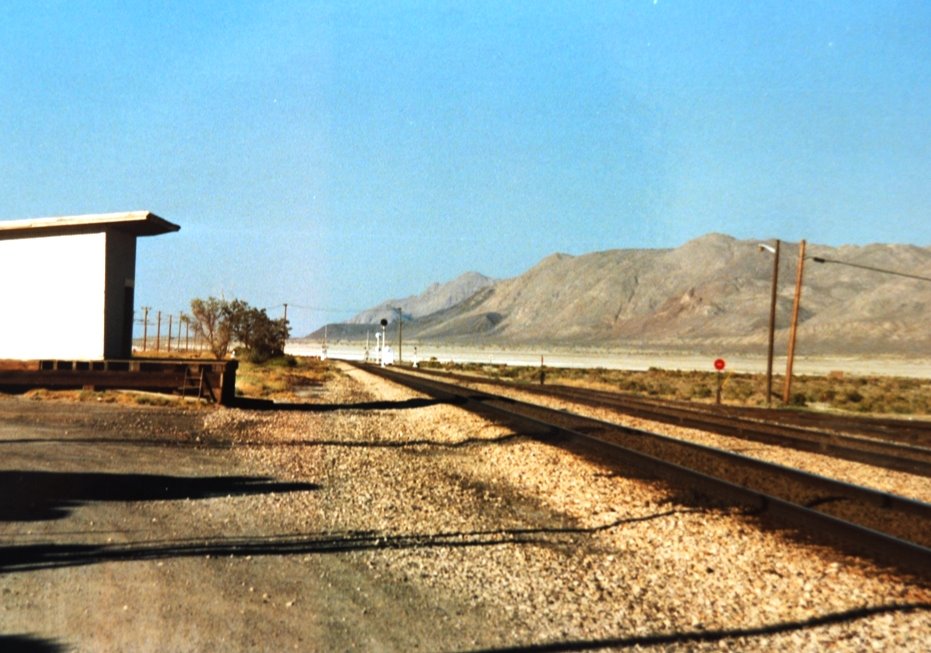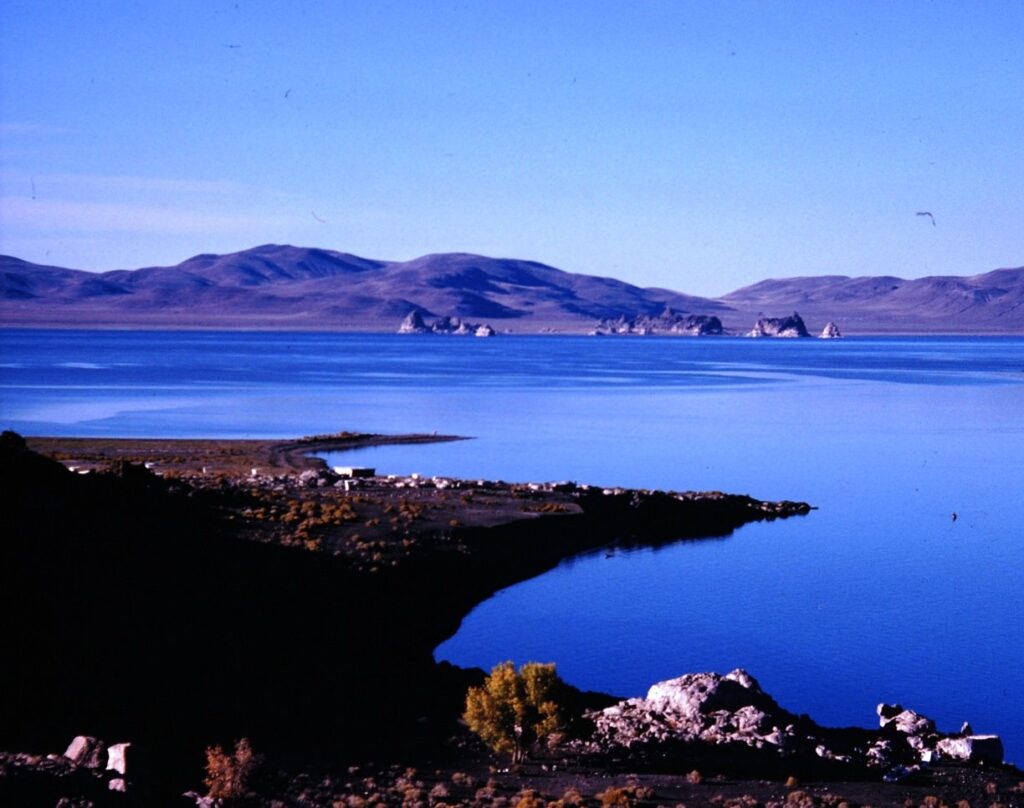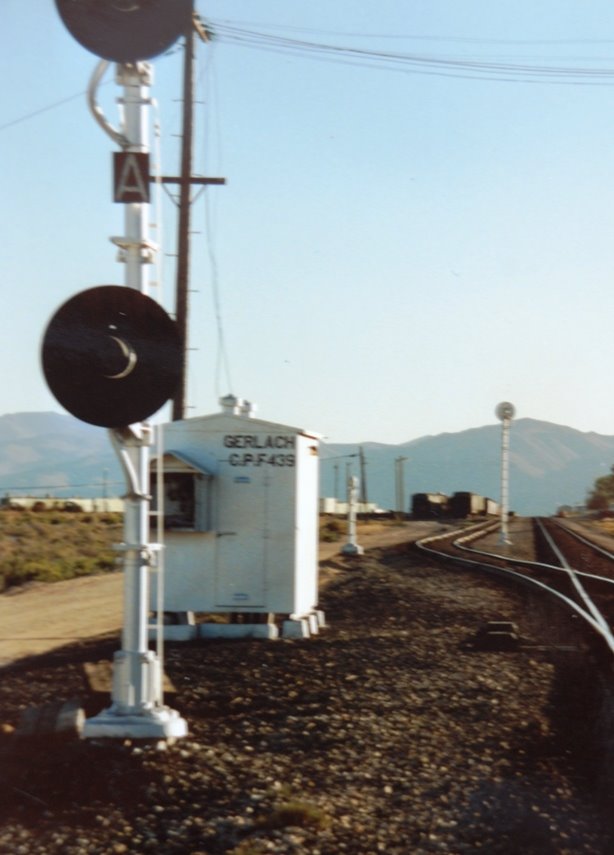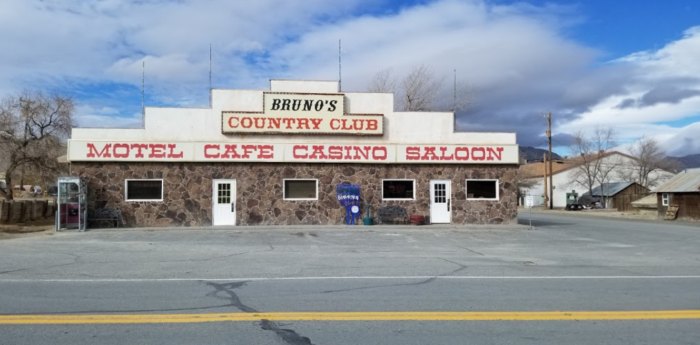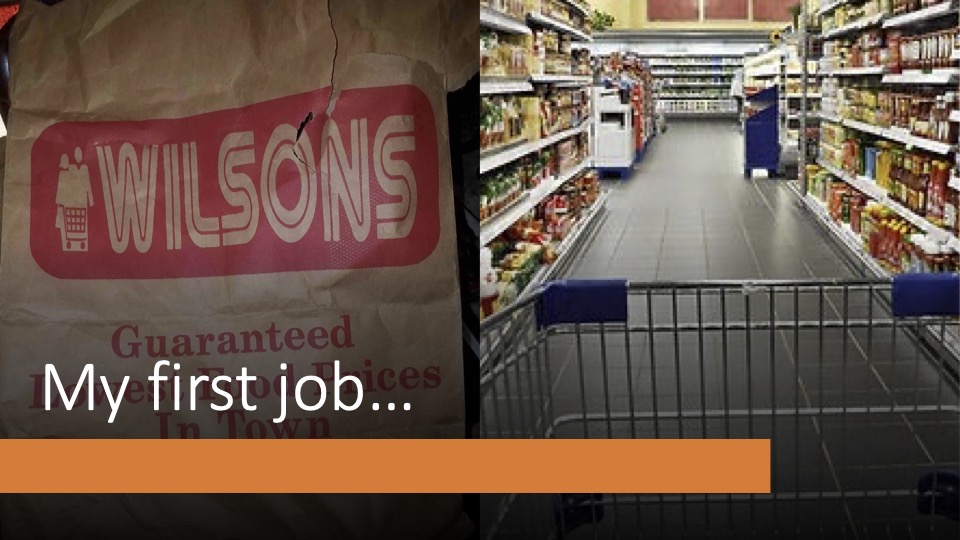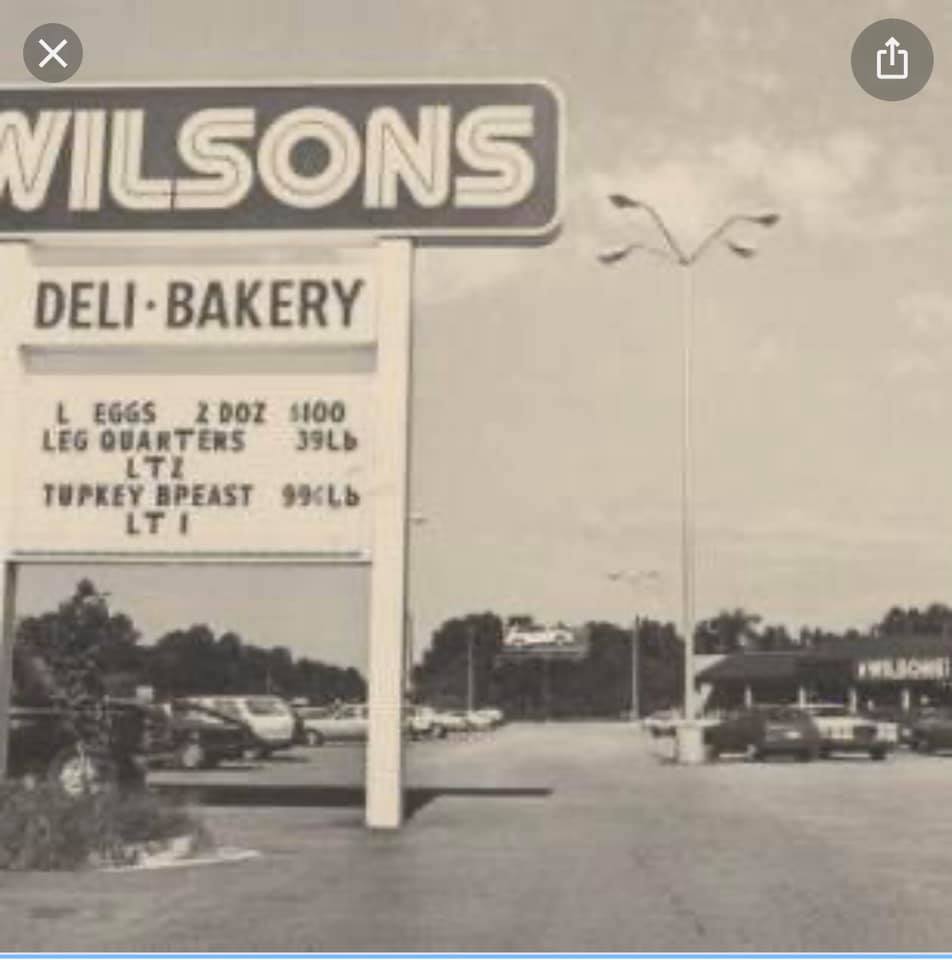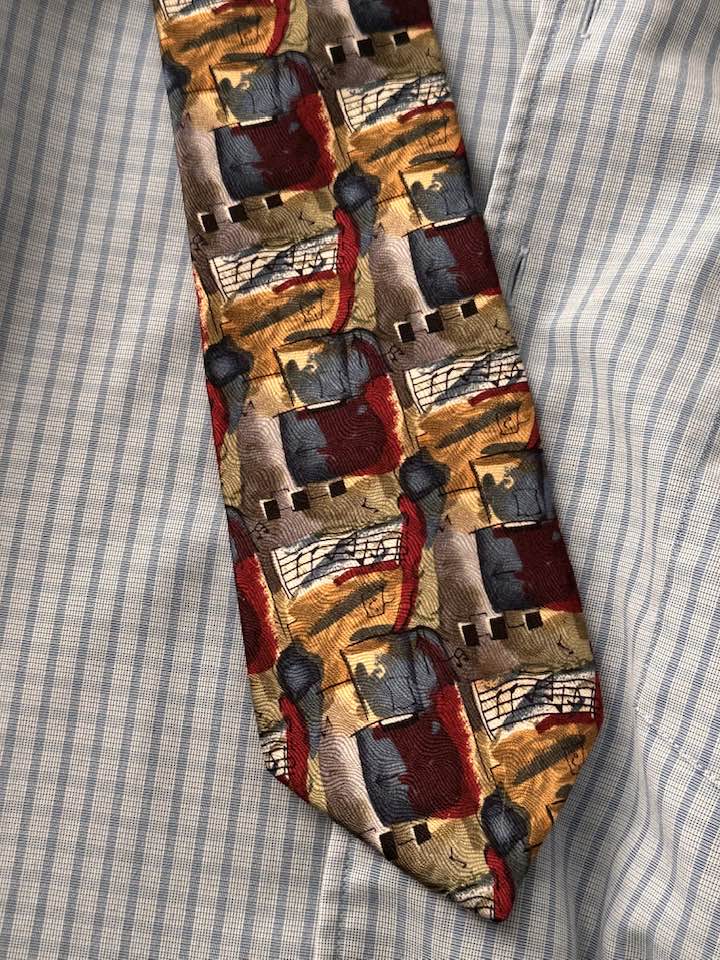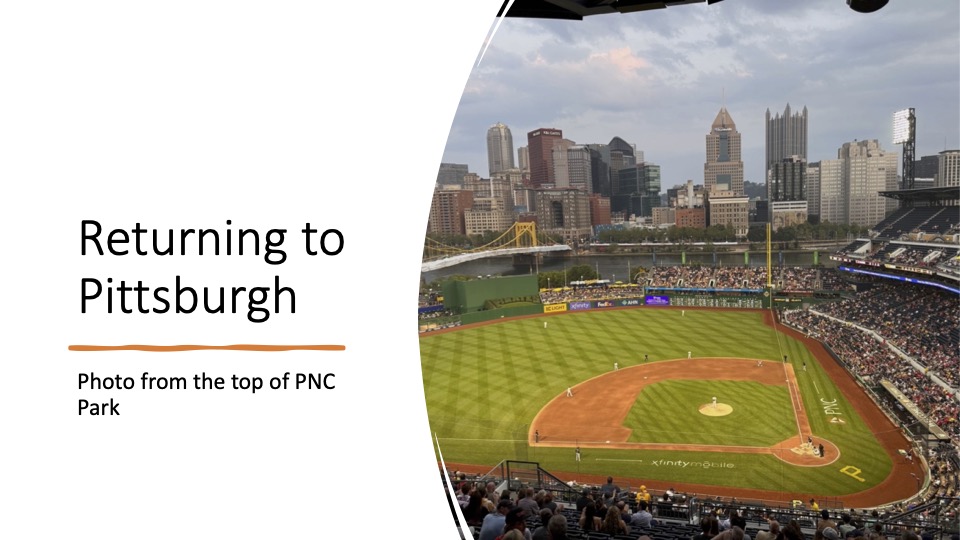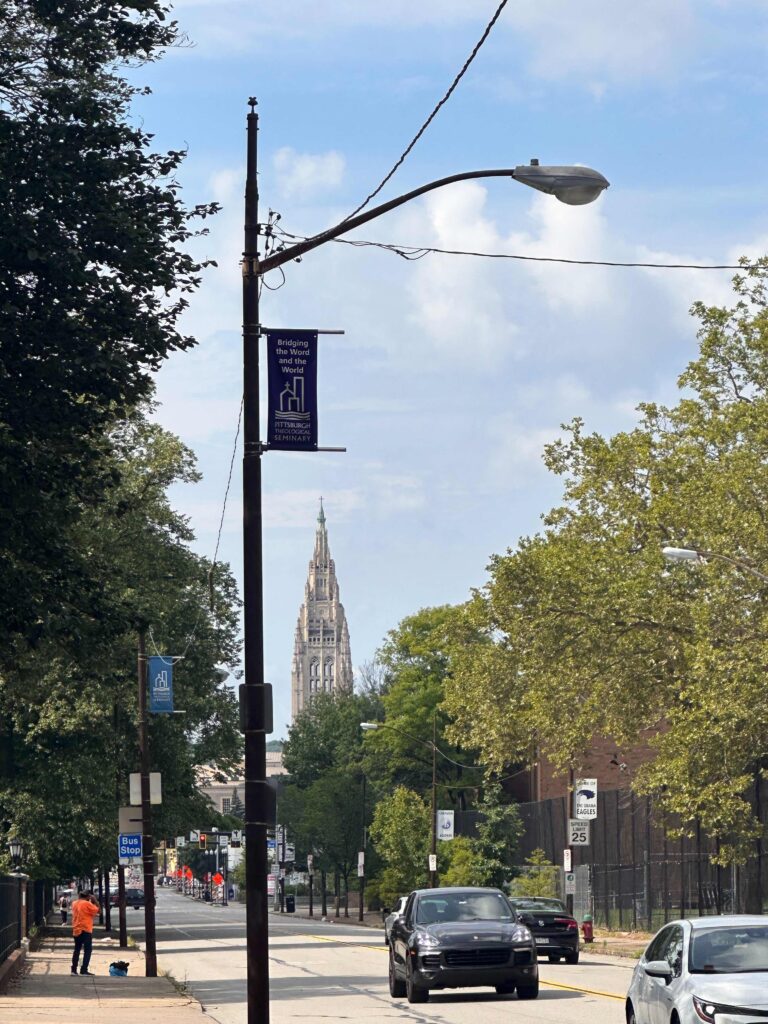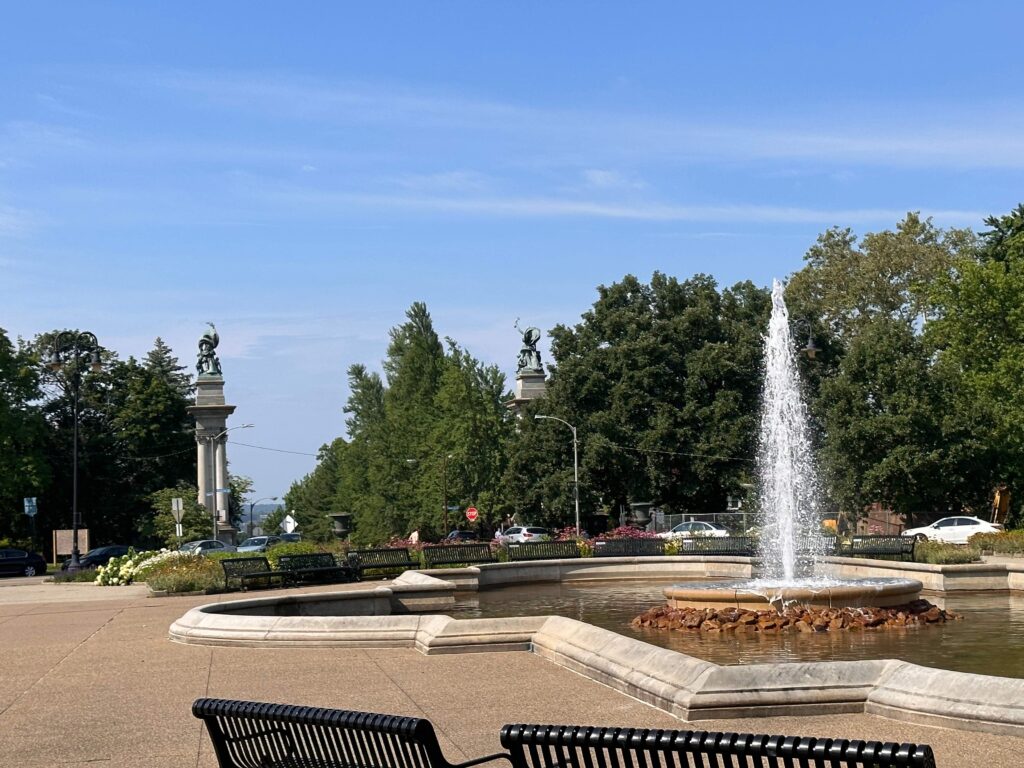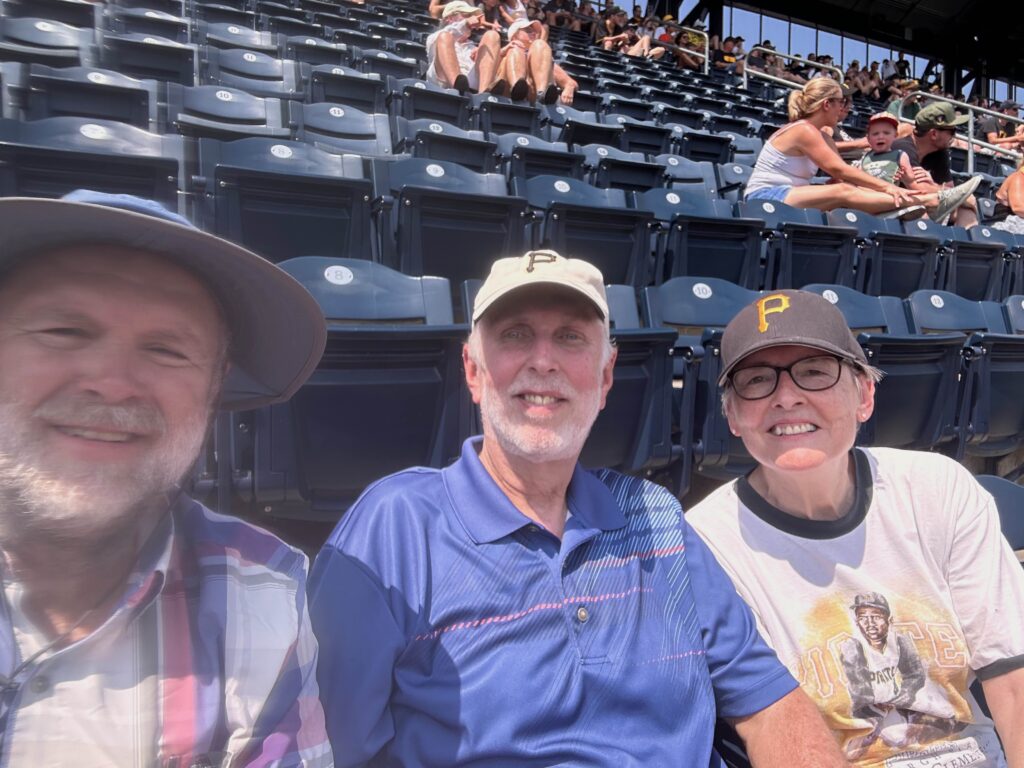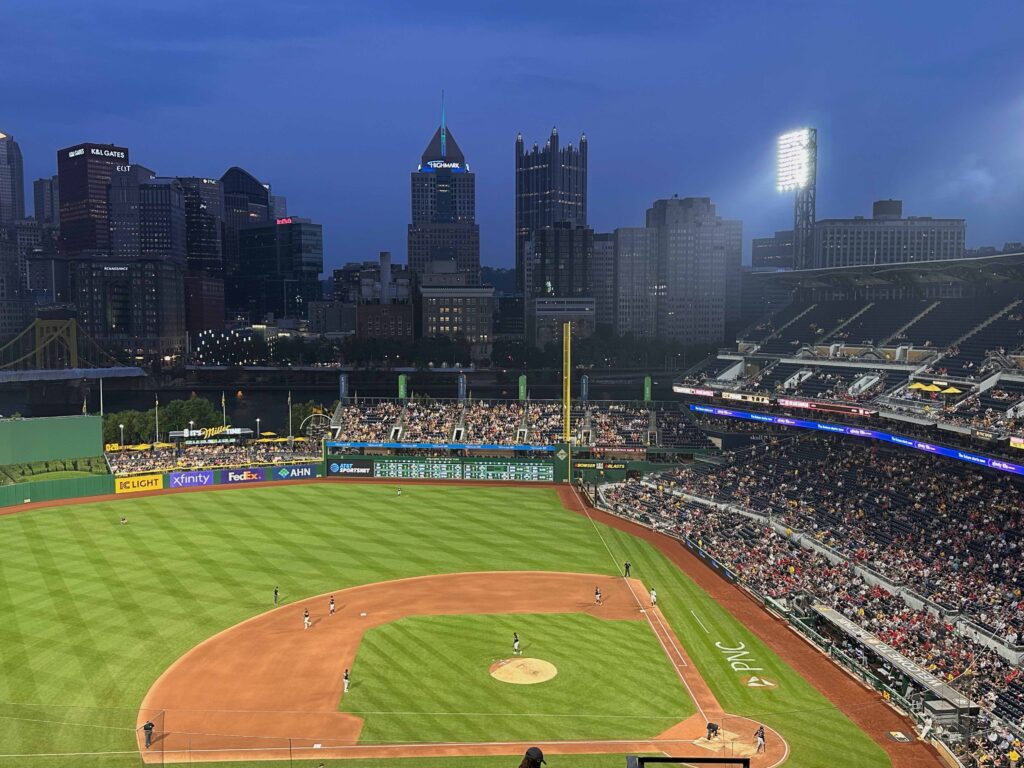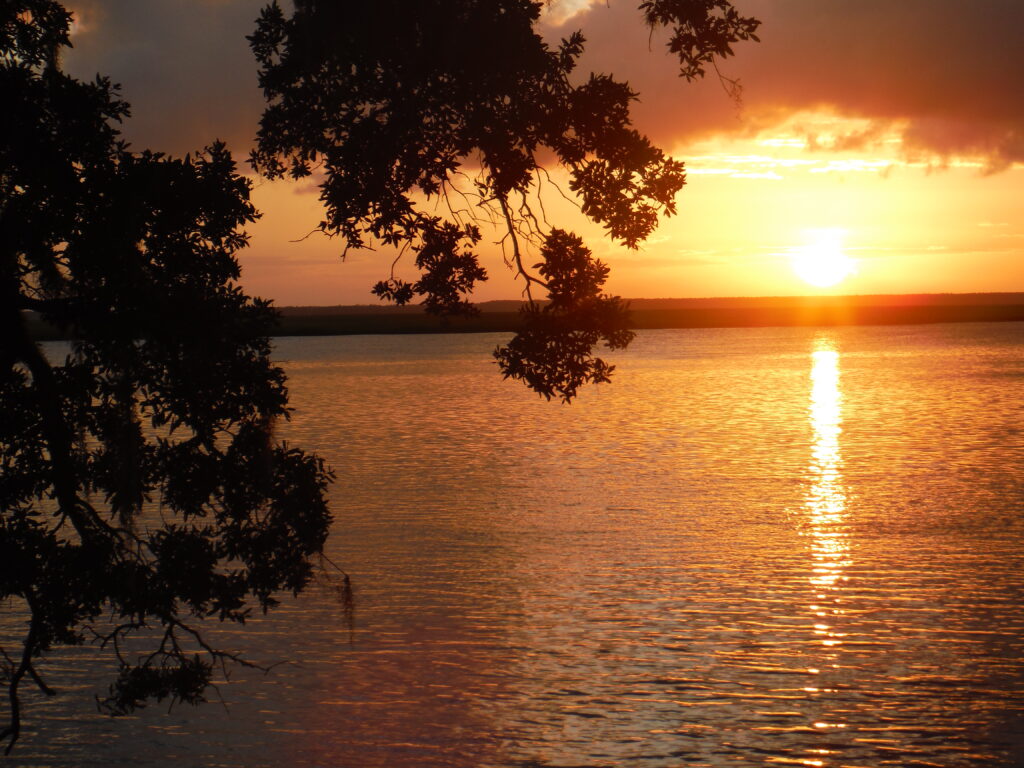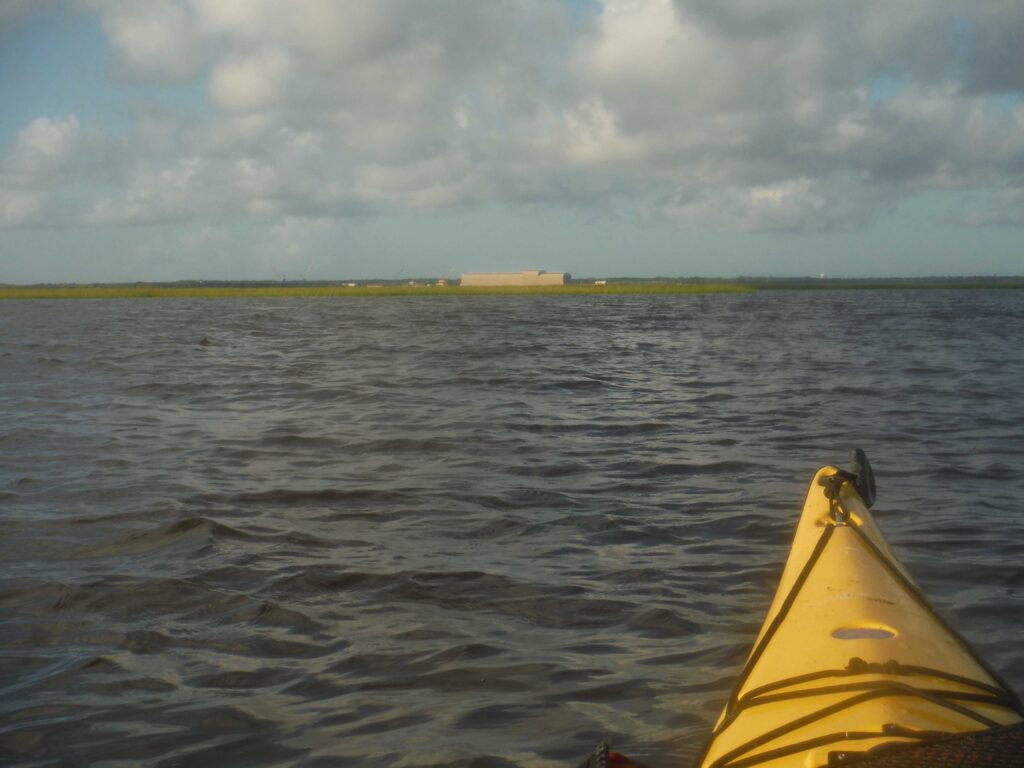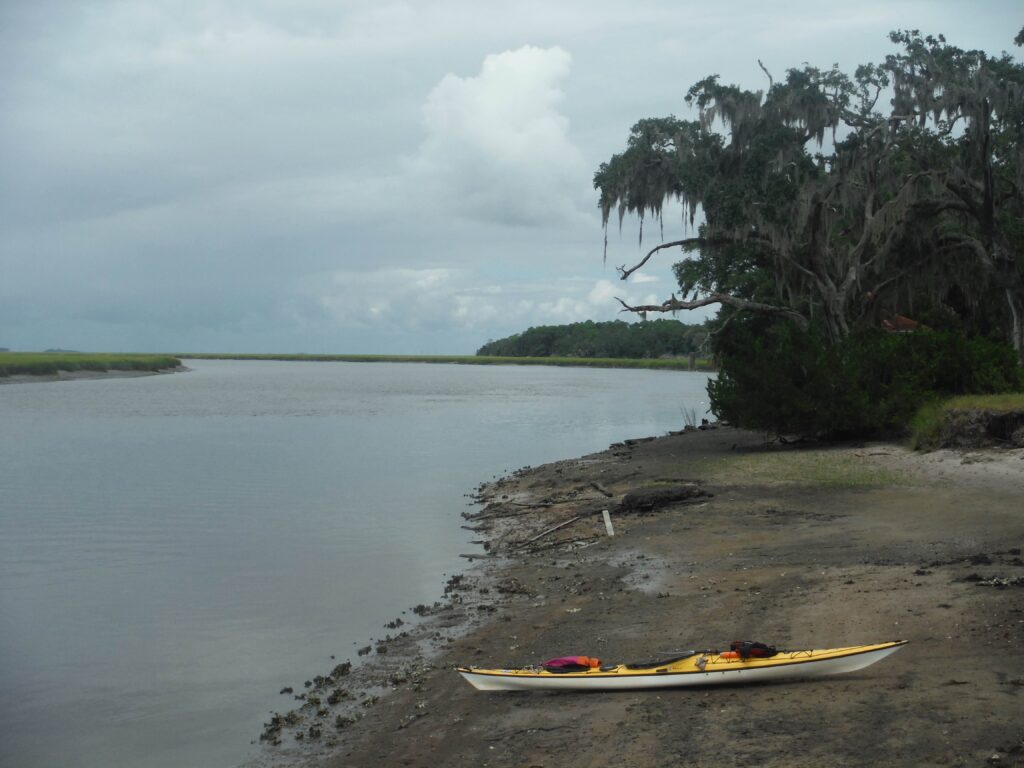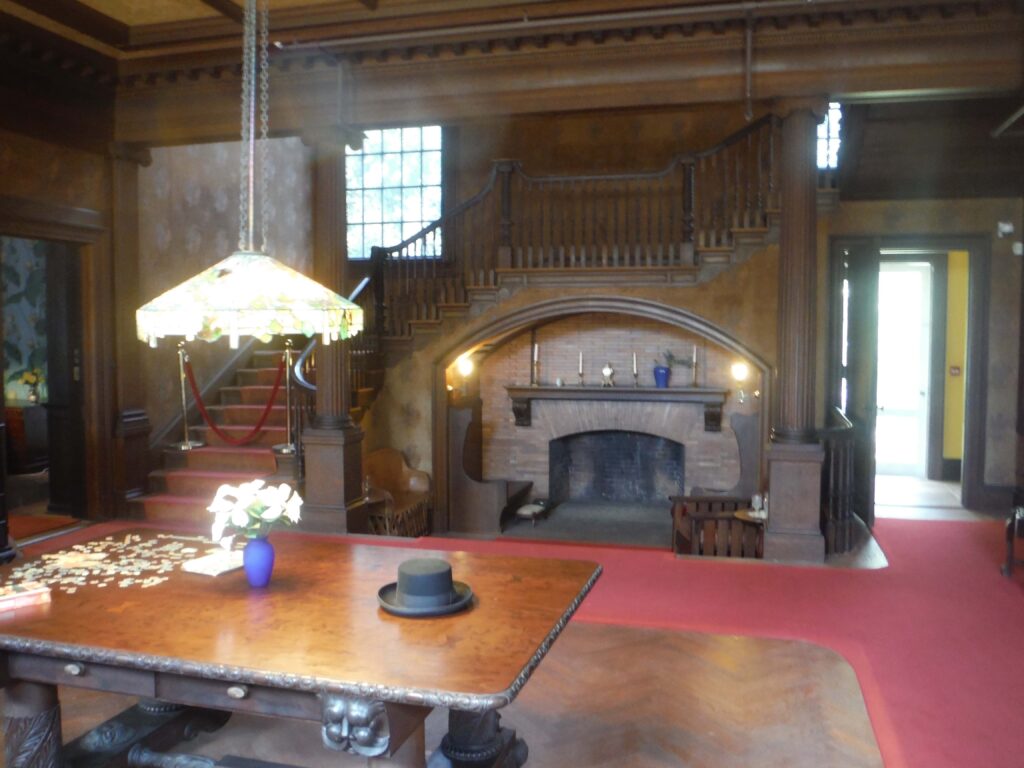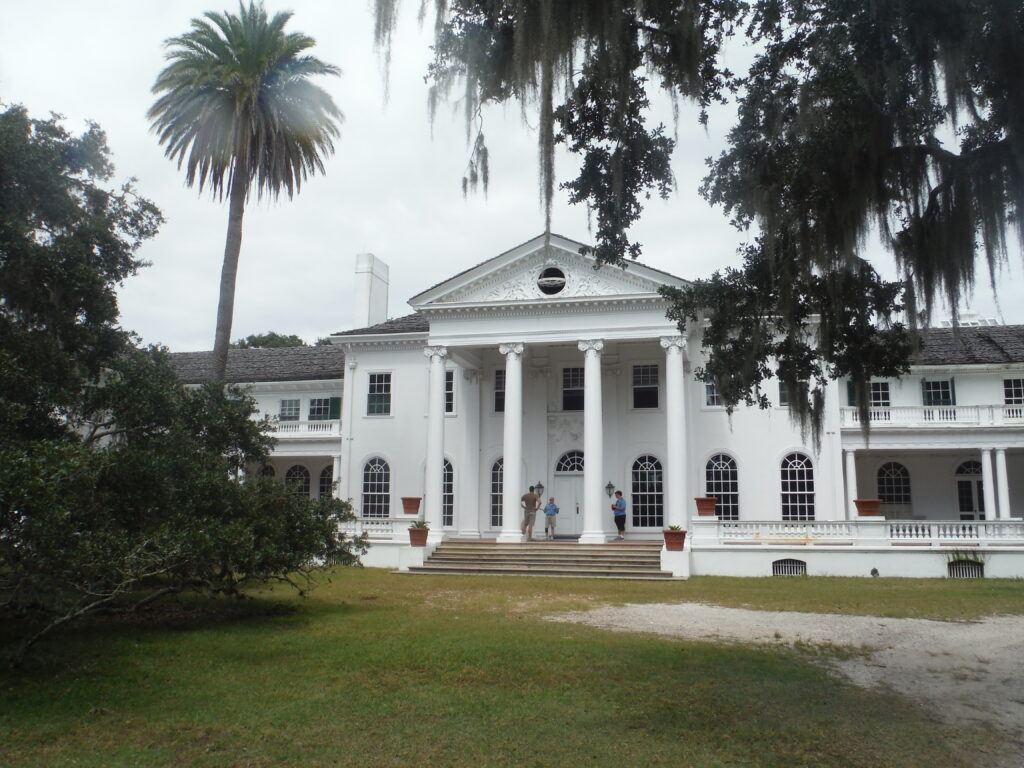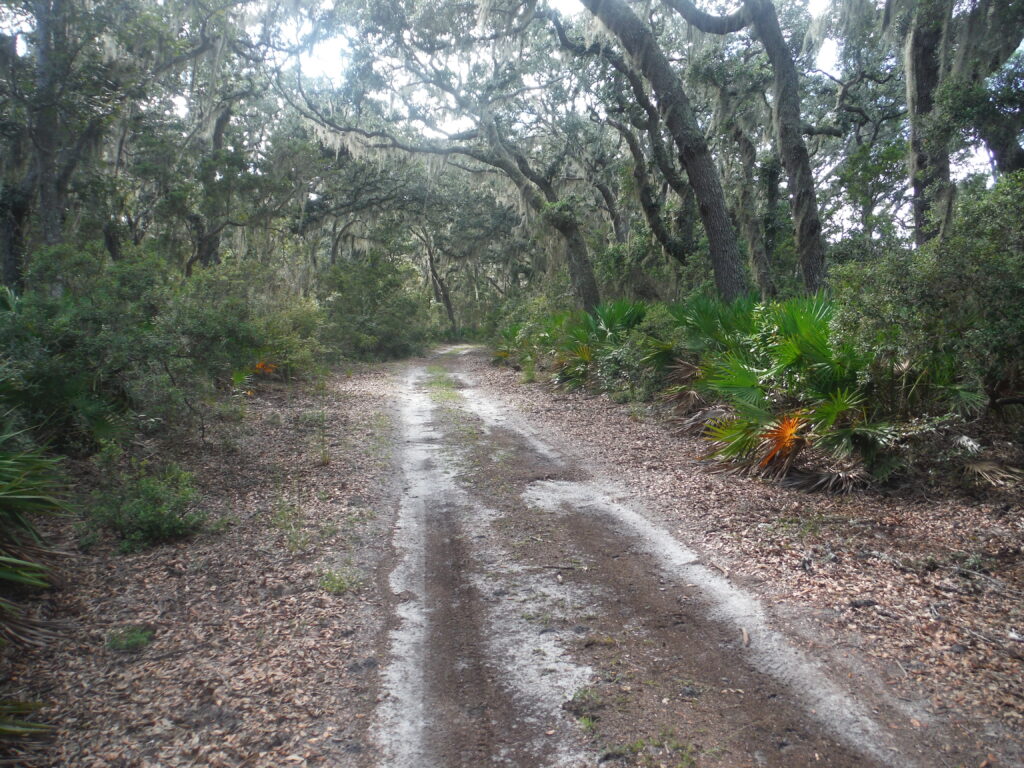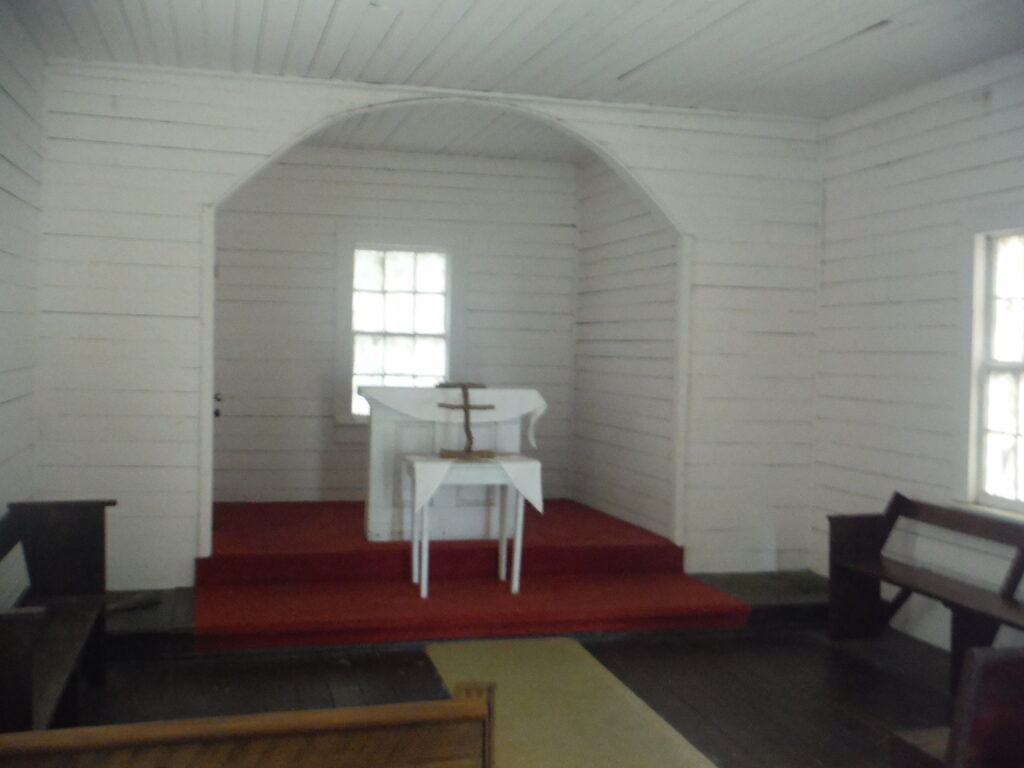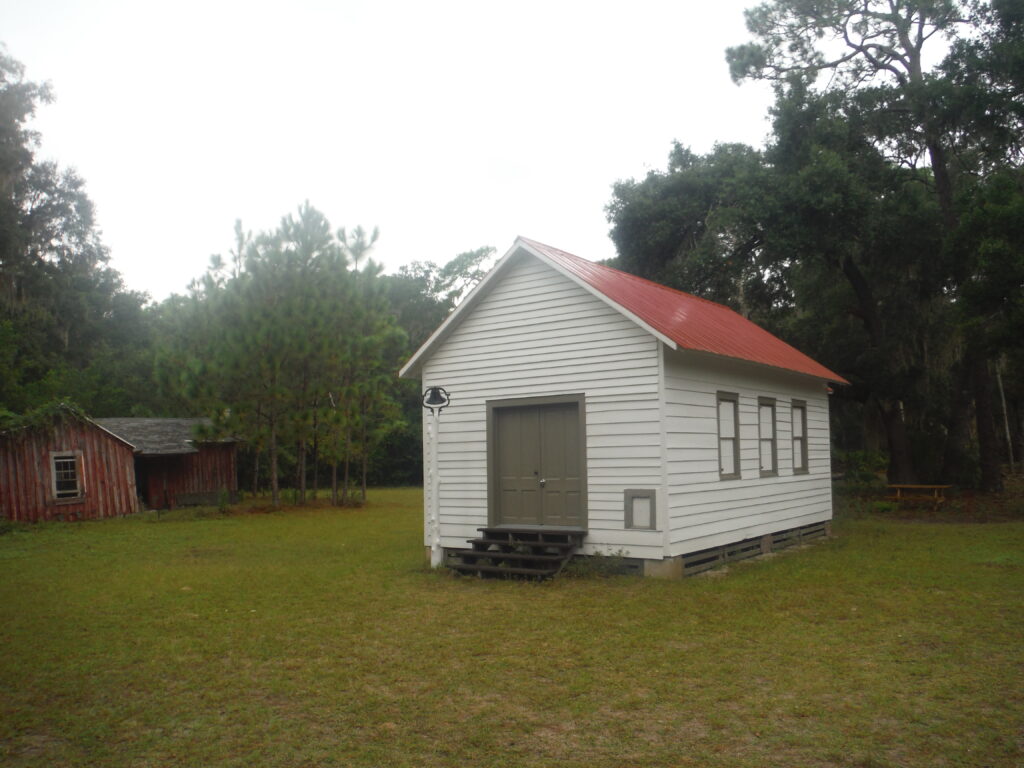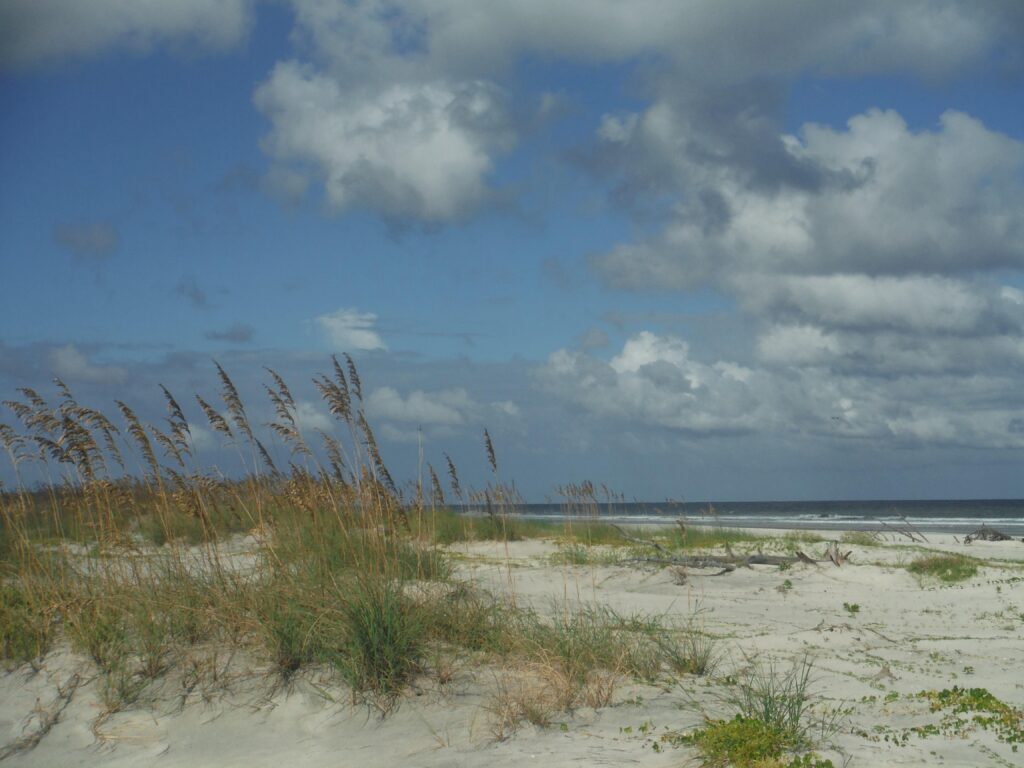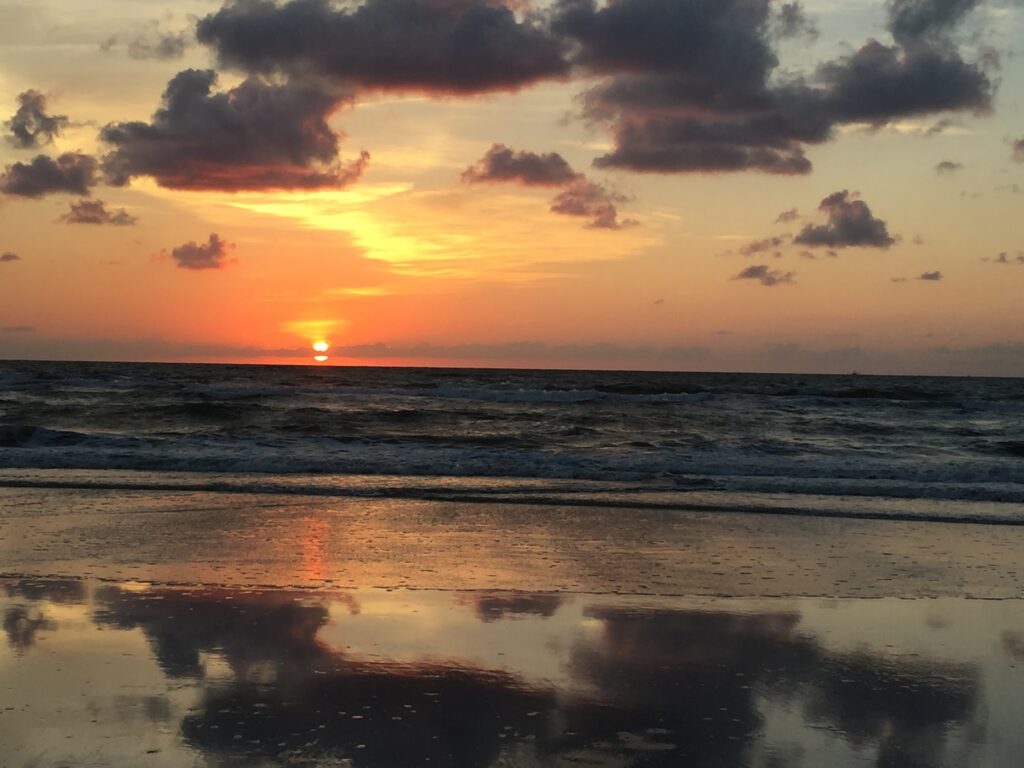This past week, I was on vacation, which is why there was no sermon on Sunday. I reworked this story for posting here. You may have read a lot of my train stories, from all over the world, but this was my first overnight long distance trip. I made the trip in December 1986. I can’t find photos of this trip, which was long before digital photography became available.

Suddenly, everything slid forward. Brakes squealed. To keep upright, I grabbed the overhead luggage rack and held on tight. There was a bang, then a clicking sound ran outside of the car, for the length of the train. We stopped.
The conductor had been walking down the aisle toward me. He, too, grabbed the overhead bar to keep from falling. His face immediately changed, displaying concern. From his expression, I knew whatever had happened wasn’t normal. As soon as we stopped, he started speaking into his radio as he turned around and headed toward the front of the train. Still not sure what had happened, I looked outside. Shingles, boards, and bits of insulation littered both sides of the tracks.
After about five minutes, the conductor came over the intercom. He informed us we’d just hit a house and were indefinitely delayed. I headed back to the lounge car, where I ran into Marylin. We headed to back of the train. In the fading light, from the back window, we could see two halves of a house sitting beside the tracks. I joked that Abe Lincoln had nothing on me: “I, too, have seen a house divided.”
We were 30 or 45 minutes from West Palm Beach, riding through orange groves south of Sebring, Florida, when the accident happened. I had just left my new friend, Marylin, a grad student studying genetics at the University of West Virginia in Morgantown. We had seen each other in Pittsburgh when we both boarded the train but didn’t get to know each other until waiting to board our second train in Washington. I was heading to West Palm Beach to meet up with my sister while she was going home for the holiday break in Miami.
A friend had dropped me off at the Pittsburgh train station in the predawn hours the day before. In contrast to warm and sunny Florida, it was a dreary December day in the Steel City. But that wasn’t unusual, almost all winter days in Pittsburgh are dreary. My train, the Capitol Limited which runs from Chicago to Washington, was late. I sat on my luggage reading and napping as my stomach gnawed. I had planned to eat breakfast on the train and there was no place in station to get anything to eat.
The train finally arrived just as it was getting light. After finding a seat and having my ticket punched, I headed to the dining car for a French toast breakfast. The train ran along the Monongahela River, past the old J&L and Homestead Steel Mills. A few mills were still running and from the window I saw the glow of the furnaces. At McKeesport, the tracks followed the Youghiogheny, a river I’d never paddled, but knew of its reputation from my kayaking days. The rain and fog made everything seem sad.
Along the way, the train kept having to stop. Late that morning, talking to the conductor in the lounge, I learned that one of the baggage cars had a hot wheel that kept overheating. Every time we stopped, we lost another half hour or so. I worried if I would miss my connection south. We were several hours late arriving in Cumberland, Maryland, where the tracks began to follow the Potomac River toward D.C. In Harper’s Ferry, they uncoupled the train and placed the trouble car off on a siding. It was too late. We’d arrive in Washington after my train to Florida was scheduled to depart.
There are two trains daily that make the run from New York to Miami. The first, the Silver Star, was my train. Luckily, there was room on the second train, the Silver Meteor. It runs a couple hours behind the first train. I called my sister and let her know that I’d be on the later train. She wasn’t home, but I left a message. I ate dinner in the crowded station (the Washington station was in the process of being rebuilt) as I passed the hours reading.
It was night by the time we boarded. After a beer in the lounge car, I headed off to sleep, enjoying the rocking of the southbound train rolling through Virginia and the Carolinas. The long day of waiting on top of a long semester in school had taken its toll. I was tired.
I woke to the sun rising in a clear sky. We ran though forests of pines and wire grass, paralleling Interstate 95. The flat land was strangely familiar. I’d grown up in such country. The weather was also warmer. I changed from my jeans to shorts and a tee-shirt and found my flip flops, before heading to the lounge car for coffee.
We got into Savannah around mid-morning. I got off the train and stretch my legs as it made a 15-minute stop. I’d learned that during the night, we’d lost several hours of time. I again tried to call my sister. I left her another message, telling her to be sure to call Amtrak before driving to West Palm to pick me up. Sometime after Savannah, I met up again with Marylin, the grad student from West Virginia. We spent much of the day in the lounge car talking with each other and to other students. We also spent time napping in her roomette. The two of us made an interesting couple. I’d just finished my first semester of seminary and she was Jewish but considered herself an atheist. It was her company that I had just left when I headed back to pack up by stuff when the accident occurred.
Sadly, with the train running so late, they ran out of food. The dining car didn’t have enough grub to open for dinner and what few sandwiches were available in the lounge car were quickly snatched up. They tried to make it up for people by offering a free drink, but they quickly ran out. We waited. The operating crew had to be replaced. Railroad rules: if you’re in an accident, a drug test was required. Seeing a house in the middle of the tracks almost sounds like someone was on drugs, but this was too real. Also, a safety crew had to inspect the train before they could move again. We sat in the dark in the middle of an orange grove.
Rumors spread. They may have been true, but we had no way to know. This was long before smart phones. One had to do with the fact that we had two engines pulling the train as they were trying to make up time. Normally, when the southbound trains arrived in Orlando, they split the train. One group goes to Tampa, the other to Miami. Both trains are pulled by a single engine. Having two engines worked in our favor, as the first we learned had been badly damaged by the metal I-beams which supported the house. We were told by the new crew that luck kept the train from jumping the track, which would have made the collusion much worse. After the inspectors checked out, they were able to back us up on the second engine and reroute us on a different track.
The other tale had to do with the house. The tracks were built up and the semi pulled the house up on the tracks, but it bottomed out. Knowing they were in a pickle; they disconnected the semi from the house instead of walking around the curve and placing flares to warn the train and perhaps give the train enough time to stop.
After about five hours of waiting and grumbling, we finally resumed our journey. When I debarked in West Palm Beach, there was my sister. She was nearly as exhausted as me.
Had I been on the Silver Star, the train I was supposed to be on, I would have arrived early that morning in West Palm. She had worked that night in the hospital and then, since she was closer to West Palm, was to pick me up. She waited and never saw me get off the train. When she asked, they told her that all passengers coming from the West had been rebooked on the Silver Meteor. They suggested that before she return to the station, she should call to make sure of the time as the train was already running several hours late. She did, but since she lived almost an hour from West Palm, in Stewart, she left home about the time of the accident. While I waited on the train, she waited in the station.
It was after midnight when we got to her home. The next day, she had planned to take me to Epcot for my Christmas present. So, we got up early to make the drive to Orlando. We had a great time, but we were both exhausted.
Other train travel stories:
Trains and Karl Barth (train ride from Danville, VA to Atlanta, GA)
Heading to Iona (Edinburgh to Oban)
Ride of a lifetime (in the cab of the V&T in Nevada)
From Bangkok to Seim Reap
Riding the International (Butterworth, Malaysia to Bangkok, Thailand
Malaysia’s Jungle Train (Singapore to Kota Bharu
Southwest Chief (Flagstaff, AZ to Kalamazoo, MI)
City of New Orleans (Battle Creek, MI to New Orleans, LA)
Morning train to Seoul (Masan to Seoul)
